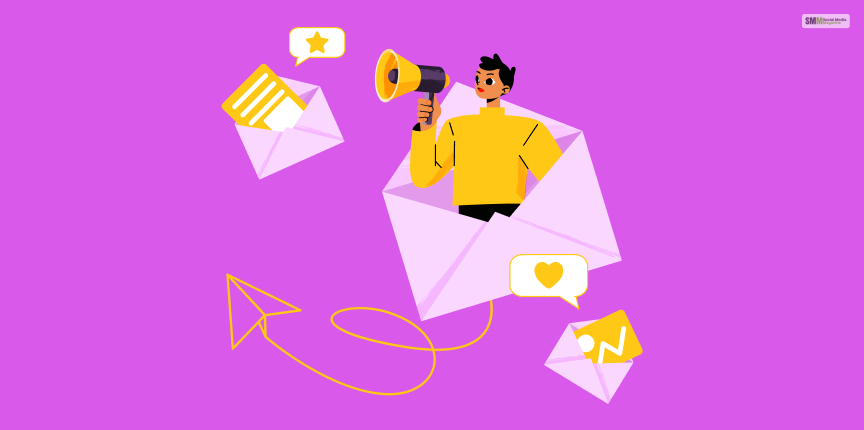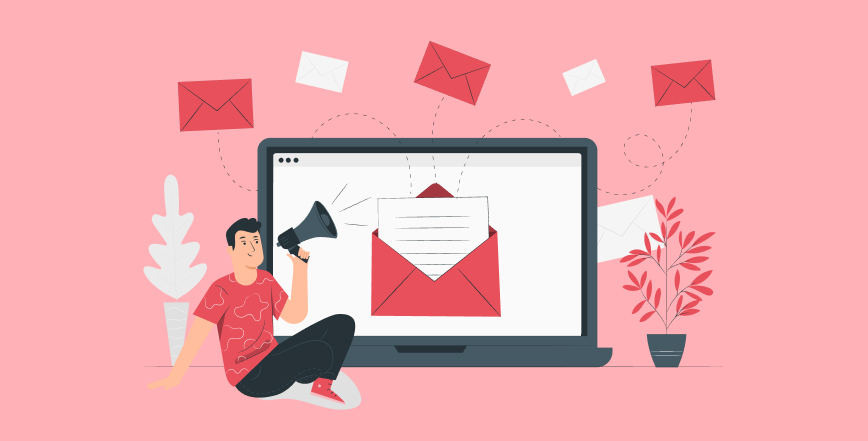Email marketing is one of the most effective and affordable ways to reach and engage your audience, build trust and loyalty, and increase conversions. According to a study by DMA, it has an average ROI of 42:1 – if you use an email blast.
But how do you ensure your email messages stand out in the crowded inbox? How will it get opened, read, and clicked by your subscribers? One of the strategies you can use is sending an email blast. Therefore, if you wish to use an email blast to raise revenues, read this post until the end.
What Is An Email Blast?
An email blast is a single email that is sent to a large number of recipients at the same time. Its purpose is to communicate a specific message or offer to a broad audience quickly and efficiently. Some examples of email blasts are:
- Newsletters
- Event Invitations
- Product launches
- Promotions and discounts
- Surveys and feedback requests
An email blast can be a powerful tool to boost your email marketing strategies. However, it will be so only if you use it wisely and follow some best practices. Otherwise, you might end up annoying your subscribers, hurting your reputation, and damaging your deliverability.
How Do You Use An Email Blast To Enhance Your Email Marketing Campaign?

To use an email blast effectively, you need to consider the following aspects:
- Audience
- Content
- Design
- Timing
- Metrics
Let’s look at each of them in more detail.
Audience
The first thing you need to do before sending an email blast is to know your audience. Who are they? What are their needs, interests, and preferences? How do they interact with your brand and your emails? The more you know about your audience, the more you can tailor your email blast to suit them. This increases your chances of success.
One of the best ways to know your audience is to segment them based on different criteria, such as:
- Demographics (age, gender, location, etc.)
- Behavior (purchase history, browsing activity, email engagement, etc.)
- Psychographics (attitudes, values, motivations, etc.)
Segmenting your audience allows you to send more relevant and personalized email blasts that match their needs and expectations. According to a report by Campaign Monitor, segmented campaigns can drive up to a 60% increase in revenue.
Content
The next thing you need to do is to craft your email blast content. Your content should be clear, concise, and compelling, and it should answer the following questions:
- What is the purpose of your email blast?
- How will it benefit your subscribers?
- What is the call to action (CTA) for your subscribers?
Your content should have a catchy subject line that grabs your subscribers’ attention and entices them to open your email. Therefore, it should be short ( 40-60 characters), relevant, and specific. Moreover, it should convey a sense of urgency, curiosity, or value.
Your email blast content should also have a captivating preheader text that complements your subject line and gives your subscribers a sneak peek of what’s inside your email. Therefore, your preheader text should be around 85-100 characters, summarizing your email’s main point or offer.
In addition, your email blast content should also have a well-written body copy that delivers your message clearly and engagingly. Therefore, ensure that your body copy should be scannable, easy to read, and focused on the benefits for your subscribers. Additionally, use bullet points, subheadings, and whitespace to break up your text and highlight the key points.
Your email blast content should also have a strong and clear CTA. It should tell your subscribers what you want them to do next. Therefore, your CTA should be visible, actionable, and persuasive, creating a sense of urgency or scarcity. Moreover, it should also use contrasting colors, buttons, or images to make your CTA stand out.
Design
The design of your email blast is also essential, as it affects your email’s readability, usability, and aesthetics. Your email blast design should be consistent with your brand identity and style. Moreover, it should reflect the tone and mood of your message or offer.
Some of the elements you should consider when designing your email blast are:
- Logo: Your logo should be placed at the top of your email and linked to your website or landing page. Your logo helps your subscribers recognize your brand and trust your email.
- Images: Images can help you illustrate your message or offer and make your email more attractive and appealing. However, you should use images sparingly and optimize them for size and quality. You should also use alt text for your images if they don’t load properly or your subscribers have images disabled.
- Fonts: Fonts can help you convey your message or offer, and they can also affect the readability and mood of your email. You should use clear, legible, and web-safe fonts and avoid using too many fonts or font sizes. You should also use colors that contrast nicely with your background and match your brand and message.
- Layout: The layout of your email blast should be simple, clean, and organized, and it should guide your subscribers’ eyes from the subject line to the CTA. You should use a single-column layout for your email blast, as it works better for mobile devices and smaller screens. You should also use a clear and logical hierarchy for your content and align your elements to create a sense of balance and harmony.
Timing
The timing of your email blast is also crucial, as it can affect your email’s open rate, click-through rate, and conversion rate. The timing of your email blast depends on several factors, such as:
- Audience: Different audience segments may have different preferences and habits when opening and engaging with your emails. You should analyze your email data and test different times and days to determine when your subscribers will most likely open and click on your emails.
- Message or Offer: Different types of messages or offers may require different timings to achieve the best results. For example, if you send an email blast about a limited-time offer, you may want to send it closer to the deadline to create a sense of urgency. If you send an email blast about an event, send it a few weeks or days before the event to remind your subscribers and encourage them to register or attend.
- Industry: Different industries may have different peak times and seasons for email marketing. You should research your industry and competitors and find out when they are sending their email blasts and what kind of results they are getting. You should also consider the holidays and events relevant to your industry and your audience and plan your email blasts accordingly.
Metrics
The last thing you need to do is measure your email blast’s performance and effectiveness. You should track and analyze the key metrics that indicate how well your email blast achieves your goals and objectives. Some of the metrics you should monitor using various email marketing software are:
- Open Rate: This refers to the number of people who have opened your email blast. This metric shows how well your subject line and preheader text attract subscribers’ attention and interest.
- Click-Through Rate: This refers to the number of people who have clicked on a link or a CTA in your email blast. This metric shows how well your email blast content and design persuade your subscribers to take action.
- Conversion Rate: This refers to the number of people who have completed an action after clicking on your email blast. This metric shows how well your email blast drives your subscribers to your website or landing page and how well your website or landing page converts your subscribers into customers or leads.
- Bounce Rate: This refers to the number of people who did not receive your email blast because of invalid or non-existent email addresses. This metric shows how clean and accurate your email list is and how well your email blast reaches your intended audience.
- Unsubscribe Rate: This refers to the number of people who have opted out of receiving your email blasts. This metric shows how satisfied and loyal your subscribers are and how relevant and valuable your email blasts are to them.
- Spam Complaints: This refers to the number of subscribers who marked your email blast as spam. This metric shows how trustworthy and reputable your email blasts are and how well you follow the best practices and regulations of email marketing.
Conclusion
An email blast is a powerful email marketing strategy that can help you reach and engage your audience, build trust and loyalty, and increase conversions and sales. However, to use an email blast effectively, you need to know your audience, craft your content, design your email, time your email, and measure your results.
Following this post’s tips and best practices, you can create and send email blasts that will enhance your email marketing campaign and boost your business. However, if you wish to know more, leave a comment below. Good luck, and happy blasting!
The post Email Blast: How Do You Use It To Enhance Your Email Marketing Campaign? appeared first on Social Media Magazine.

